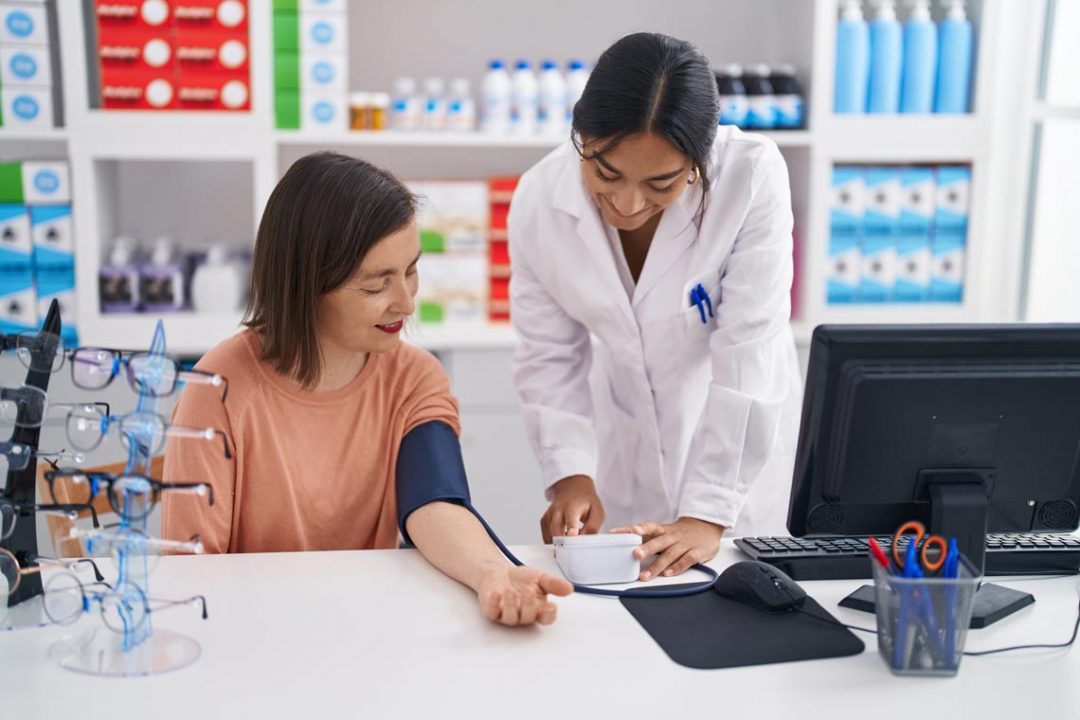Advertisment
Remote monitoring and pharmacist helped improve hard-to-control blood pressure

Up to 74% of adults with treatment-resistant high blood pressure were able to get their blood pressure below 140/90 mm HG within one year through a program combining remote blood pressure monitoring with pharmacist interactions, according to preliminary research presented at the American Heart Association’s Hypertension Scientific Sessions 2024. The meeting is in Chicago, September 5-8, 2024, and is the premier scientific exchange focused on recent advances in basic and clinical research on high blood pressure and its relationship to cardiac and kidney disease, stroke, obesity and genetics.
The study targeted patients with blood pressure higher than 140/90 mmHg who were receiving care in clinics specializing in kidney conditions. The ConnectedCare365 Hypertension Management program provided people in central and northeast Pennsylvania communities with remote blood-pressure monitoring and other devices that transmit information to doctors. Patients were identified and enrolled through a centralized monitoring center, known as ConnectedCare365, to ensure consistent messaging and ample education on the devices and patient communication application. Doctors and pharmacists assigned by the program co-managed patient care and helped adjust medications for patients.
“In our study, we developed a program that builds off what others have done using telemonitoring and pharmacists,” said senior study author Alexander Chang, M.D., M.S., a nephrologist and associate professor in the department of nephrology and the department of population health sciences at Geisinger Health in Danville, Pennsylvania. “By deploying these extra resources to get blood pressure under control in high-risk patients and reducing hospitalizations, we are hoping that we can help provide more justification in expanding these types of programs.”
Notifications from the home blood pressure-monitoring devices were transmitted to the central monitoring center. During the first six months of the program, the notifications were first transmitted to doctors in collaboration with pharmacists through a virtual platform that connected to patients’ phones through an app, which connected to the devices over Bluetooth. Blood pressure measurements were assessed and blood pressure medications were prescribed and/or adjusted accordingly. During the second six months, the notifications were transmitted first to pharmacists, who co-managed blood pressure through a collaborative telehealth practice agreement. While patients were enrolled in the program, they also had real-time access to a nurse during business hours through a live chat feature in the central monitoring center.
Study results include:
- 67% of patients were able to achieve blood pressure control of <140/90 mm Hg at six months, and 74% of patients were able to achieve blood pressure control by 12 months. The 2017 clinical guideline from the American Heart Association and the American College of Cardiology set the threshold for stage 1 hypertension at 130/80 mm Hg and the threshold for stage 2 hypertension at 140/90 mm Hg.
- Systolic blood pressure was lowered by an average of 3.3 mm Hg/month for those with initial blood pressure readings greater than 150/90 mm Hg; lowered by 2.4 mmHg/month for those with initial readings in the range of 140-149/90-99 mm Hg; and lowered by 0.6 mm Hg/month for those with initial readings lower than 140/90 mm Hg.
- Pharmacist telehealth encounters, in which the patients talked directly with pharmacists about hypertension management, were documented in 65% of patients, and pharmacist interactions were associated with a 1.3 mm Hg/month decline in systolic blood pressure over time.
- During the 12-month study period, 46% of patients had a blood pressure medication adjustment, and 37% were prescribed new blood pressure medication.
- Patients experienced fewer hospitalizations during the study period compared to the previous 12 months; however, there was no difference in the number of reported emergency department visits.
“We know that home blood pressure monitoring can be done by patients accurately and can really help engage patients in their own health. However, we also know that these self-measured blood pressure readings often do not make it back to patients’ health care team, therefore, delays in adjusting medications are very common. This type of physician-pharmacist collaborative model with home blood pressure monitoring that is centrally received and monitored by the care team can help address these issues,” Chang said.
Study background and details:
- The study included 205 adults, with an average age of 62 years; 48% self-identified as women and 52% as men.
- 87% of participants self-identified as non-Hispanic white adults, 6% as Black adults; 5% as Hispanic adults, and 1.5% as “other” for race/ethnicity.
- 53% of participants had a diagnosis of chronic kidney disease at the time of enrollment.
- Participants’ blood pressure was tracked for up to 6-12 months between March 2022 and May 2024 with consistent improvements even after participation in the study ended.
The study’s strengths included its ability to review hospitalization data, inclusion of the pharmacists, the careful examination of the pharmacists’ role in this program and that it was conducted in a real-world setting, the authors noted. The study’s limitations included that patients were their own control group to determine the impact of the program and participants had to have internet access.
“This is an important program that allows for more efficient management of a high-risk patient group,” said Wanpen Vongpatanasin, M.D., FAHA, professor in the department of internal medicine at UT Southwestern Medical Center, director of UT Southwestern Medical Center’s Hypertension Section in the division of cardiology and clinical chair of the Hypertension Scientific Sessions 2024 Executive Committee. “This program’s team-based care approach including a pharmacist remotely makes it a feasible option to increase access. In addition, the study’s findings signal a way to reduce hospitalization and to improve blood pressure, which is very encouraging.”
Note: Moderated Poster Presentation MP11 in Session MPS02 New Paradigm and Lessons learn from Hypertension Clinical Trials in 2024 is Friday, September 6, 2024 at 9:35 a.m. CT.





